Editorial and Advisory Board profiles
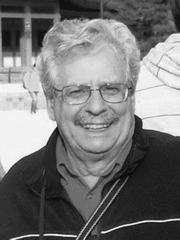 | ||
| Plate1 | ||
His research interests have long involved atomic mass spectrometry, which led to elemental speciation studies and ultimately metallomics research. Current interests involve using atomic and molecular mass spectrometry to better understand cell toxicity from the molecular point of view contemporaneously with major cell events. His research on metals, non-metals and their differing forms has implications for chemical warfare agent detection, environmental remediation, and health care.
He has been honored by Eastern Michigan University with its 1990 Distinguished Alumni Award, by the American Chemical Society with the 1992 Cincinnati Chemist of the Year Award, the Federation of Analytical Chemistry and Spectroscopy Society with the 1994 Anachem Award, and with the 2000 Spectrochemical Analysis Award given by the Analytical Division of the American Chemical Society. Recently he received the University of Cincinnati-Excellence in Doctoral Student Mentoring Award and the UC 2007 Rieveschl Excellence in Research Award.
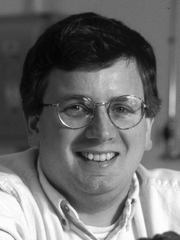 | ||
| Plate2 | ||
Ariel D. Anbar is a biogeochemist in the Department of Chemistry and Biochemistry and the School of Earth & Space Exploration at Arizona State University. He received an AB in Geological Sciences and Chemistry from Harvard University in 1989, and a PhD in Geochemistry from the California Institute of Technology in 1996.
Anbar’s research centers on the chemistry of transition elements in the environment. A major emphasis of this research is to determine how the abundances of bioessential elements such as Fe and Mo changed in the oceans during Earth history. The goal is to understand how these changes affected evolution.
This research is pursued through the development and application of novel analytical approaches using ICP mass spectrometry, In particular, Anbar’s group pioneered the use of multiple-collector, magnetic sector ICP-MS to precisely measure mass-dependent variations in the isotopic abundances of transition elements that arise from mass fractionation. This work reveals that abundance variations of 0.01–0.1%/amu, once undetectable, are ubiquitous in nature. Such measurements in natural samples, informed by laboratory experiments and theoretical studies, provide insights into the environmental chemistry of metals and the metal-centered interactions between organisms and their surroundings. Applied to the geologic record, such “metal stable isotope” studies provide information about metal biogeochemical cycles on the ancient Earth, environmental changes that perturbed these cycles, and biological activity in the distant past.
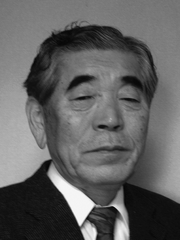 | ||
| Plate3 | ||
Hiroki Haraguchi graduated from the University of Tokyo (1965), from which he also received MSci and PhD degrees in 1967 and 1973, respectively. From 1969, he served as assistant professor at the University of Tokyo, research chemist at the National Institute for Environmental Studies, and associate professor at the University of Tokyo. From 1975 to 1977, he was a post-doctoral fellow at the University of Florida, where he worked with Prof. J. D. Winefordner. He was promoted to full professor of analytical chemistry in the Department of Applied Chemistry at Nagoya University in 1988, and retired in 2007. He is currently Emeritus Professor of Nagoya University as well as the program officer of the Ministry of Environment and an associate member of the Science Council of Japan. His research interests are the development of highly-sensitive analytical methods for chemical speciation of trace elements in biological, environmental and geochemical systems. He proposed “metallomics as integrated biometal science” in JAAS in 2004, which has been receiving great attention as a newly emerging scientific field in life science, complementary to genomics and proteomics. Furthermore, he has been attempting to establish the concept of “cell microcosm”, which indicates the existence of all elements in a single biological cell.
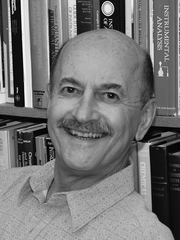 | ||
| Plate4 | ||
Gary M. Hieftje is Distinguished Professor and Mann Chair of Chemistry at Indiana University in Bloomington, Indiana. His research interests include the investigation of basic mechanisms in atomic emission, absorption, fluorescence and mass spectrometric analysis, and the development of instrumentation and techniques for atomic methods of analysis. He is also interested in the on-line computer control of chemical instrumentation and experiments, the use of time-resolved luminescence processes for analysis, the application of information theory to analytical chemistry, analytical mass spectrometry, near-infrared reflectance analysis, metallomics, and the use of stochastic processes to extract basic and kinetic chemical information. He has won numerous awards in the fields of analytical chemistry and spectroscopy, has held major offices in several scientific societies, and has served on the editorial boards of many major journals. He is the author of over 500 publications, 10 books, and 15 patents. More than 65 students have received doctorates under his direction.
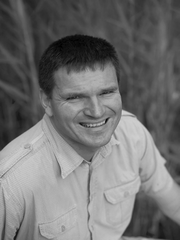 | ||
| Plate5 | ||
Ryszard Lobinski is research director at the CNRS (Laboratory of Analytical Bioinorganic and Environmental Chemistry in Pau) and professor of chemistry at the Warsaw University of Technology. He obtained his PhD (1989) and DSc (habilitation) (1994) degrees from the Warsaw University of Technology, Poland. He held post-doctoral positions at the Institute of Spectroscopy and Applied Spectrometry (ISAS) in Dortmund (1990) and at the University of Antwerp (UIA.) (1991–1994) before joining the National Research Council of France (CNRS) in 1994. R. Lobinski is the author or co-author of over 200 articles in international journals, 3 books, 3 edited journal issues, and about 90 invited lectures at international meetings. He received the CNRS 2006 Silver Medal and is a Fellow of the Royal Society of Chemistry. He is also the co-director of UltraTrace Analyses Aquitaine (UT2A) (a startup company at the University of Pau) and Past-President of the Analytical Chemistry Division of IUPAC. His principal research interest is the development of analytical approaches to species-specific (speciation) analysis for trace and ultratrace metals in environmental and nutrition chemistry and in the life sciences.
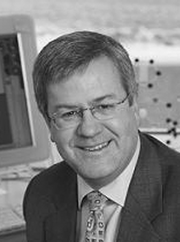 | ||
| Plate6 | ||
Thomas V. O’Halloran is Morrison Professor at Northwestern University, Department of Chemistry and Department of Biochemistry, Molecular Biology and Cell Biology. He completed his PhD at Columbia University, New York, with Professor S. J. Lippard and followed this with a post-doctoral position at MIT with Professor C. T. Walsh.
Professor O’Halloran’s research interests include the chemistry and biology of transition metal receptors; transcriptional regulation mechanisms; metalloregulatory proteins; molecular and cell biology of copper, iron and zinc; metal ion chaperone proteins for Cu and Zn; mercury thiolate and protein chemistry; high-valent, iron-oxo chemistry; non-heme iron enzymes; design and development of inorganic-based antitumor drugs and protease inhibitors.
Professor O’Halloran’s awards and recognitions include: Member, Advisory Board, US DOE Biological Sciences Directorate; NIH MERIT Award (Method to Extend Research in Time) for grant “Mechanistic Studies of the MerR and Fur Metalloregulatory Proteins”; Advisory Board, Center for Environmental Bioinorganic Chemistry Princeton University; Robert Lurie Cancer Center at Northwestern University – Director of Cancer Genes and Molecular Regulation Basic Research Program; Leadership Council; Co-Director of Molecular Oncogenesis Basic Research Group; Fellow, American Association for the Advancement of Science; Fellow, John Simon Guggenheim Memorial Foundation; Leroy Hall Award for Excellence in Teaching given by the Weinberg College of Arts and Sciences; American Society of Biochemistry and Molecular Biology Scientific Achievement Award sponsored by Schering-Plough; Associated Student Government Faculty Honor Roll; Mortar Board-Faculty Honor Roll of Outstanding Teachers; The Camille and Henry Dreyfus Foundation Teacher-Scholar Award; Alfred P. Sloan Research Fellow; Presidential Young Investigator Award, NSF; National Searle Scholars Award, The Chicago Community Trust; The Camille and Henry Dreyfus Foundation Distinguished New Faculty Award; Pegram Award, Columbia University.
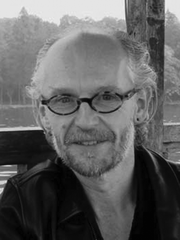 | ||
| Plate7 | ||
David E. Salt is a Professor at Purdue University, Department of Horticulture and Landscape Architecture, West Lafayette, Indiana, USA.
His long term research interest is to understand the function of the genes and gene networks that regulate the plant ionome (elemental composition), along with the evolutionary forces that shape this regulation. To achieve this his laboratory couples high-throughput elemental profiling, with bioinformatics, genomics and genetics, in both genetic model species (yeast, Arabidopsis and rice) and “wild” plants (Astragalus, Thlaspi and Pteris). He has been involved in such work since his PhD (Liverpool University, UK, 1985–1988) working on the mechanisms of copper tolerance in Mimulus gutattus (yellow monkey flower). He also has a BSc in Biochemistry (University of North Wales, Bangor, UK, 1981–1984) and an MSc in Computer Science (Hallam University, UK, 1984–1985). He has published over 75 peer reviewed papers since 1989 with approximately 4000 citations. During his career he has won competitive research funding from USDA, DOE, NSF and NIH. He is a member of the American Society of Plant Biologists and has sat on both the Education and Public Affairs committees. He is also a Monitoring Editor for Plant Physiology, and on the Editorial Boards of the Brazilian Journal of Plant Physiology, BMC Plant Biology and the International Journal of Phytoremediation.
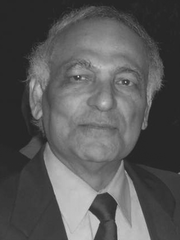 | ||
| Plate8 | ||
Bibudhendra (Amu) Sarkar is a leading authority in inorganic biochemistry. He graduated with a PhD degree in biochemistry from the University of Southern California, Los Angeles in 1964. He joined the Department of Biochemistry, University of Toronto and Research Institute of the Hospital for Sick Children with a Medical Research Council Scholar award. He was a Visiting Scientist at the Institute de Biologie Physico-Chimique, Université de Paris-Sorbonne, France where he worked on the ab initio molecular orbital calculations of metal-binding sites of proteins. He was a Visiting Scholar working on protein structure in the Department of Biochemistry, University of Cambridge, UK with an award from the Nuffield Foundation. As the Head of Structural Biology and Biochemistry Department at the Hospital for Sick Children, he established a major research centre with a broad initiative in protein structure and function. He discovered the copper-histidine treatment of Menkes’ disease, a devastating neurodegenerative disease in children caused by a genetic defect affecting copper transport. His pioneering research on the structure and function of metal-binding proteins led to the discovery of the ATCUN motif, which can serve as a probe for protein structure determination by paramagnetic relaxation enhancement NMR spectroscopy and selective cleavage of DNA. His major research interests are in the area of metal-related genetic diseases with a special emphasis on Wilson’s and Menkes’ diseases and studying the effects of toxic metals in the environment and their impact on human health. Dr Sarkar is an Emeritus Professor at the University of Toronto and the Hospital for Sick Children, Toronto.
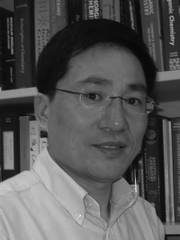 | ||
| Plate9 | ||
Hongzhe Sun obtained his PhD from the University of London (with Peter J. Sadler) in 1996. After post-doctoral work at the University of Edinburgh, he joined the Department of Chemistry at the University of Hong Kong in 1998, where he is currently a professor. He was the recipient of the NSFC Outstanding Young Scholar Award in 2005, and serves on the advisory board of the Journal of Biological Inorganic Chemistry. His research interests are centered on metallodrugs and metalloproteins, inorganic structural biology and metallomics.
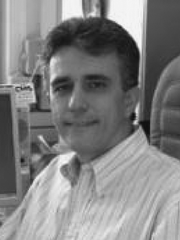 | ||
| Plate10 | ||
Marco Aurélio Zezzi Arruda was born in Piracicaba, São Paulo state, Brazil in 1965. In 1996 he assumed the position of Assistant Professor at the University of Campinas-Unicamp, Department of Analytical Chemistry, becoming Associate Professor in 2001. The main research lines of his research group include mass and atomic spectrometry, sample preparation, mechanization and bioanalysis with an emphasis on metallomics. In the field of metallomics his current research interests include interdisciplinary work involving comparative metallomics of plants (i.e. soybean, sunflower) and human body fluids (i.e. blood serum, saliva, urine) to identify possible biomarkers for transgenic species and human diseases, as well as to evaluate reactive oxygen species production, and (metallo)protein responses under metallic stress in a given system.
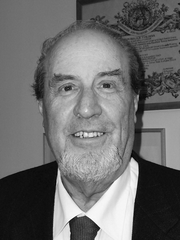 | ||
| Plate11 | ||
Ivano Bertini is Professor of Inorganic Chemistry at the University of Florence and is Director of the Magnetic Resonance Center (CERM). He has received several honours, including three Laurea Honoris Causa (from the universities of Stockholm, Ioannina and Siena). He is a member of the Academia Europaea and the Italian Accademia dei Lincei, and is, or has been, on the editorial staff or advisory board of over 20 of the most authoritative journals in chemistry, biochemistry and inorganic chemistry.
Since 1975 he has studied the structure–function relationships of metalloproteins through biophysical methods. In 1990, he transformed his lab into an NMR lab for the structural biology of metalloproteins, and eventually pioneered the exploitation of genome data banks. He has pursued advancements in technology for solution structure determination, particularly for paramagnetic metalloproteins, and developed specific software applications. He has also established a molecular biology department for high-throughput protein expression in structural genomics projects on metalloproteins. He has published over 600 research articles and has solved more than 100 protein structures.
In 1999 he founded the present Magnetic Resonance Center (CERM) at the University of Florence in an independent and prestigious building hosting an impressive battery of NMR spectrometers. The Center constitutes a major NMR infrastructure in the Life Sciences.
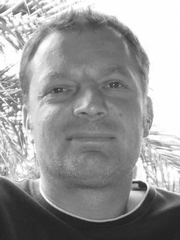 | ||
| Plate12 | ||
Jörg Bettmer finished his chemistry degree (University of Münster, Germany) in November 1992. Afterwards, he started his PhD in the Department of Analytical Chemistry at the same university under the supervision of Prof. K. Cammann, which he finished in 1996. After several short-term post-doctoral posts he moved to the University of Mainz, Germany, in 2000, where he obtained his habilitation in summer 2004 under the supervision of Professor Klaus G. Heumann. After a visiting professorship for environmental and analytical chemistry at the Humboldt-University in Berlin in 2004/05 he moved back to Mainz, where he was appointed assistant professor in analytical chemistry until 2007. In May 2007 he moved to the University of Oviedo, Spain (Professor Alfredo Sanz-Medel), where he is currently holding a position as “Ramón y Cajal researcher”.
His research interests and experience are mainly centred in the field of elemental speciation with special emphasis on the development of hyphenated techniques. This includes labelling strategies for (quantitative) protein and metalloprotein determinations.
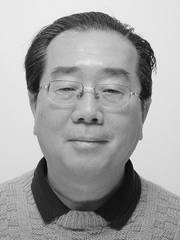 | ||
| Plate13 | ||
Zhifang Chai is a radiochemist working at the Multidisciplinary Initiative Centre, Institute of High Energy Physics, the Chinese Academy of Sciences. He graduated from Fudan University, China, in 1964. As a fellow of the Alexander von Humboldt Foundation, Germany, he worked at Cologne University from 1980 to 1982 in the field of nuclear technology and its applications. Later, he worked in France, the USA, the Netherlands and Japan. He has long been involved in the methodology of nuclear analytical techniques and their multidisciplinary applications, especially in the study of the chemical speciation of trace elements in environmental and biological systems. He has authored or co-authored over 332 papers in peer-reviewed journals, 6 Chinese books and 3 English books. He is a member of many domestic and international scientific societies. In 2005 he was awarded the George von Hevesy Award – the premier international award of excellence to honour outstanding achievements in radioanalytical and nuclear chemistry. In 2007 he was elected as a member of the Chinese Academy of Sciences. His present interest is to develop novel nuclear analytical methods for the study of metallomics.
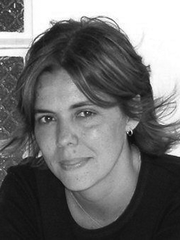 | ||
| Plate14 | ||
Heidi Goenaga-Infante graduated from the University of Havana, Cuba and was then awarded a MUTIS fellowship from the Spanish International Cooperation Agency at the University of Oviedo, Spain from which she obtained her PhD in 1999. She was a research assistant at the Micro and Trace Analysis Centre (MiTAC), University of Antwerp from 1999–2003. In 2003, she joined LGC’s mass spectrometry team in Teddington, United Kingdom as a senior research and development scientist.
Dr Goenaga-Infante is currently the lead scientist of speciation analysis and metallomics research at LGC. Her research interests concern the combined application of elemental and molecular mass spectrometry with chromatography for heteroatom speciation analysis of dietary substances, supplements and clinical samples and the high accuracy determination of heteroatom-containing species in these substances by IDMS approaches, with the aim of characterising new “speciated” certified reference materials. She has undertaken and managed a wide variety of projects and studies including the coordination of CCQM (Consultative Committee on Amount of Substance) international intercomparisons in the speciation field.
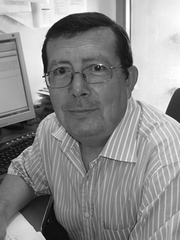 | ||
| Plate15 | ||
Jose Luis Gómez-Ariza is full professor of Analytical Chemistry at the University of Huelva. He received his BSc (1973) and PhD (1976) from the University of Sevilla. He was temporary assistant professor (1973–77) and permanent assistant professor (1977–93) at the University of Sevilla. In 1993 he moved to the University of Huelva where he became a full professor. His research interests include the investigation of new analytical approaches for chemical species characterization using hyphenated techniques and the analysis of metal species involved in environmental, food and health issues. The study of metalloproteins and other metal-linking biomolecules using multidimensional analytical approaches (metallomics) is now under his attention considering its integration with other -omics such as proteomics and transcriptomics. He is the author or co-author of over 250 scientific publications, 2 books, and holds several patents. Over 25 students have received doctorates under his direction; many others have received MS degrees, and scores of undergraduates and visiting scientists have performed research in his laboratory.
J. L. Gomez-Ariza is a member of the Spanish Society for Analytical Chemistry (SEQA), Royal Society of Chemistry, American Chemical Society and American Society for Biochemistry and Molecular Biology. He was honoured with the Andalusia Research Award in 2003 and the Huelva Industry Excellence Research Award also in 2003. He was president of the Speciation Group of SEQA and the Andalusia Group of the Spanish Society for Analytical Chemistry (GRASEQA). In 2003, he was appointed as an academic of the Academy of Sciences, Arts and Letters of Huelva.
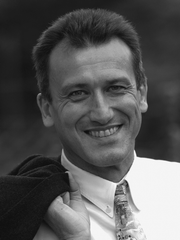 | ||
| Plate16 | ||
Rudi Grimm received his PhD in Biology at the University of Munich in 1987. After completing a post-doc at the University of Freiburg/Germany and the Riken Institute in Tokyo, Japan he joined Hewlett-Packard as a senior life science application chemist in 1991. In 1998 he left the company and became the head of protein chemistry at the Munich based proteomics company Toplab. In June 1999 he joined Hexal Pharma to establish biotech laboratories for the development of generic recombinant protein drugs. In September 2002 he rejoined Agilent Technologies as the worldwide proteomics and metabolomics market development manager. Since May 2006 he has been working at the Agilent Technologies headquarter in Santa Clara, California.
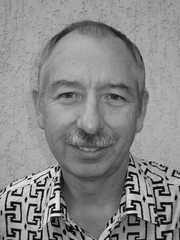 | ||
| Plate17 | ||
Norbert Jakubowski has been a senior scientist working in elemental mass spectrometry at ISAS-Institute of Analytical Sciences for more than 25 years. His research interests are related to trace elemental analysis with a focus on instrumental developments in plasma source mass spectrometry (ICP-MS, GD-MS) and method development for the speciation of hetero-elements in biomolecules (P, S, As, Se, Cr, Ni, Cd, Pt, Pd, Rh). By using ICP-MS he has studied the adduct formation of DNA with alkylating compounds. His team have developed a new laser ablation cell coupled to ICP-MS to investigate metalloproteins after PAGE separation directly in the gel or after electroblotting onto membranes. This approach was used to study the binding of Cd in plant proteins, to detect selenium-containing proteins in fish samples or to quantify the phosphorylation degree of proteins. A few years ago he started to develop labelling techniques for proteins and antibodies by using metal tags. He is now applying this novel technology for the sensitive detection of cytochromes P450 in multiplexed assays.
Dr Jakubowski is a member of the editorial board of JAAS (Reviews Editor) and of the advisory boards of the journals: Analytical and Bioanalytical Chemistry and Analyst.
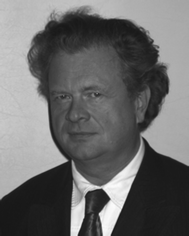 | ||
| Plate18 | ||
Bernhard K. Keppler received his diploma and PhD in chemistry from the University of Heidelberg in 1979 and 1981, respectively, and a PhD in medicine from the German Cancer Research Center of Heidelberg in 1986. He habilitated and gained the qualification of a university lecturer in inorganic chemistry at the University of Heidelberg in 1990. In 1995, he joined the Institute of Inorganic Chemistry at the University of Vienna as a full professor. He is Head of the Institute of Inorganic Chemistry and Vicedean of the Faculty of Chemistry at the University of Vienna.
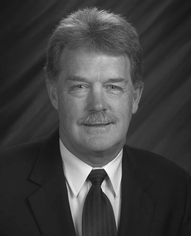 | ||
| Plate19 | ||
David W. Koppenaal is a Laboratory Fellow, Associate Director of the Biological Sciences Division, and Chief Technology Officer of EMSL at Pacific Northwest National Laboratory. Before joining the Advisory Board of Metallomics, he has been a member of the Editorial Board of JAAS and is currently an Advisory Board member. Dr Koppenaal’s research interests include atomic mass spectrometry instrumentation and applications, with special interests in the metallomic applications of ICP-MS, and collision/reaction cell, high-resolution MS, and new generation MS detection techniques. Dr Koppenaal is a Fellow of the Royal Society of Chemistry and the American Association for the Advancement of Science (AAAS).
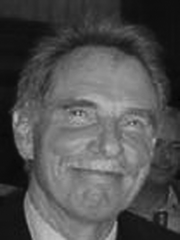 | ||
| Plate20 | ||
Peter M. H. Kroneck holds a Diploma in Chemistry from Universität Basel, Switzerland, and completed his Dr rer. nat. studies at Universität Konstanz, Germany. He undertook post-doctoral studies at Utah State University, USA and his habilitation at Universität Konstanz, Germany.
He is currently Professor of Biochemistry, Universität Konstanz (since 1986) and his professional experience includes Visiting Scientist, Natl. Biomed. ESR Center, Milwaukee, USA (1988–1994), Head, Bioinorganic Research Group, Universität Konstanz (1980–1986), Visiting Scientist, Weizmann Institute of Science, Rehovot, Israel (1977) and Visiting Scientist, University of Wisconsin Madison, USA (1976).
His achievements include: Chair of “Metals in Biology” GRC (2009); Organizer DAAD Summer School Metals in Biology—Key Elements of Life, Cuernavaca, Mexico (2008); Member Natl. Org. Committee, EUROBIC 4, Garmisch-Partenkirchen (2004); Organizer/Chair, Intern. Symposium Copper 2003, Konstanz (2003); Lecturer Metals in Biological Systems, Center for Intern. Studies, Grinnell College, USA (2003); Lecturer Cu Enzymes and Proteins, Louvain-la-Neuve, Belgium (1985–2003); Medal of the European Society for Bioinorganic Chemistry, received at EUROBIC 6, Lund, Sweden (2002); Organizer/Co-Chair, 13th Intern. Conference Flavins and Flavoproteins, Konstanz (1999); Organizer/Co-chair, Intern. Volkswagen-Symposium Electron Transfer, Konstanz (1999); Natl. Org. Committee of ICBIC 7, Lübeck (September 1995); Organizer/Chair, Intern. Symposium FeS Proteins, Konstanz (1994); Organizer/Chair, Intern. Meeting Redox Cofactors and Metals in Proteins, Konstanz (1991).
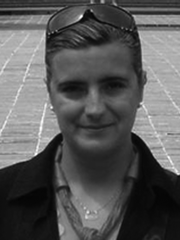 | ||
| Plate21 | ||
Maria Montes Bayón is Associate Professor at the Department of Physical and Analytical Chemistry of Oviedo University since 2007. After completing her chemistry degree at the University of Oviedo (1993), she performed her MSc Studies at the University of Plymouth (UK) under the supervision of Dr Hywel Evans and Prof. Les Ebdon. Once back in Oviedo, she started her PhD studies at Oviedo University under the supervision of Dr J. I. Garcia Alonso and Prof. A. Sanz Medel that concluded in 1999. Her thesis was awarded with a Departamental Prize due to the number and quality of publications obtained. Afterwards, she conducted post-doctoral work as a Fulbright Scholar at the Department of Chemistry in the University of Cincinnati (Ohio, USA) for 26 months, under the supervision of Prof. J. A. Caruso. Back in Spain, she obtained the “Ramón y Cajal” research contract (five years) and she joined the group leaded by Prof. Sanz-Medel. During this period, she obtained a national habilitation and then a permanent position at the Department of Physical and Analytical Chemistry.
She is author or co-author of more than 70 scientific publications in international journals and book chapters. This work has also been presented in many lectures at national and international conferences as an invited speaker. Her main research topics include: hybrid techniques for speciation to solve biological and environmental problems. HPLC, Capillary GC and Capillary Electrophoresis, as powerful separation tools are coupled to Plasma-based Mass Analysers (ICP-MS), and Speciation for Proteomics, integrating MS “molecular” (MALDI-TOF and Electrospray-Q-TOF) and “atomic” (ICP-MS) for the elucidation of metalloproteins and some post-transductional modifications (e.g. glycosilation) related to a certain pathological status.
Dr Montes-Bayón participates in several national research projects from the Ministry of Education and Science and she is a member of the board of the Mass Spectrometry Group in Spain and has belonged to the National Spectroscopy Group and to the Advisory Board of JAAS since 2006.
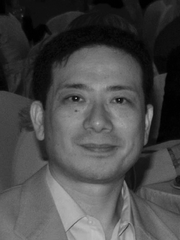 | ||
| Plate22 | ||
Yasumitsu Ogra obtained his BS degree from Tokyo University of Pharmacy and Life Sciences in 1991, and his PhD from Chiba University (Japan) in 1996. He continued carrying out scientific research as a post-doctoral fellow at the National Institute of Industrial Health (Japan). Since 1997, he has worked in the Department of Toxicology and Environmental Health, Graduate School of Pharmaceutical Sciences, Chiba University as a research associate (1997–2003) and an associate professor (2004–present). He was a visiting scientist at the French National Research Council (CNRS) in 2002 and 2003. His current research interests include the elucidation of mechanisms underlying the physiological and toxicological effects of metals and metalloids, and development of a novel approach to metal/metalloid toxicology by the combination of speciation/fractionation of metals/metalloids and molecular biological techniques. His special attention is devoted to toxicology in metallomics, i.e., toxicometallomics.
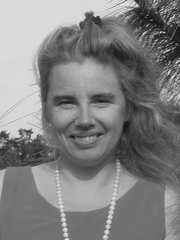 | ||
| Plate23 | ||
Joanna Szpunar graduated from the Warsaw University of Technology and then moved to the University of Warsaw from which she obtained her PhD (1992) and DSc (habilitation) (2000) degrees. She was a research fellow at the University of Antwerp (UIA) (1993–1994), and fellow of the European Environmental Research Organization (EERO) at the University of Bordeaux (1995–1996). In 1997 she joined the National Research Council of France (CNRS) as research engineer at the Laboratory of Bioinorganic Analytical and Environmental Chemistry in Pau. Szpunar is titular professor of chemistry (Poland). Her research interests focus on the development of hyphenated techniques for the in vivo speciation and fractionation of trace metals and metalloids in natural products and biological systems.
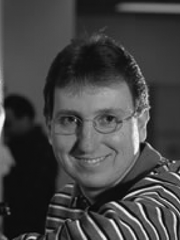 | ||
| Plate24 | ||
Jeffrey Zaleski received his BS degree from SUNY at Geneseo in 1988 followed by his PhD from Michigan State University in 1993. He was subsequently awarded a Jane Coffin Childs Post-doctoral Fellowship at Stanford University where he studied Physical-Bioinorganic chemistry under the direction of Professor Edward I. Solomon. Professor Zaleski joined the faculty at Indiana University in 1996.
His research interests are in the fields of metals in medicine, bioinorganic chemistry, synthetic chemistry, and materials. Professor Zaleski and his group have four main thrust areas: (1) Attempting to harness the power of naturally occurring chemical functionalities for applications as metal-mediated biomedical reagents. These systems are primarily based on radical or diradical intermediates whose reactivity is difficult to control and systematically modulate. (2) The development of novel nano-scale architectures as hybrid materials for optics, photo-magnetic switching, and nanomedicine applications. Constructing these materials involves development of new synthetic strategies or novel ligand coatings with specific properties to enable optical or magnetic excitation. (3) Applications of spectroscopy to electronic structure of inorganic and bioinorganic metal sites involved in thermal or photoinduced processes such as energy transfer, or biochemical gene expression. (4) Synthesis of unique porphyrinoid architectures that have unusual optical properties for energy-related photoelectronic or synthetic applications requiring extended chromophores.
| This journal is © The Royal Society of Chemistry 2009 |
